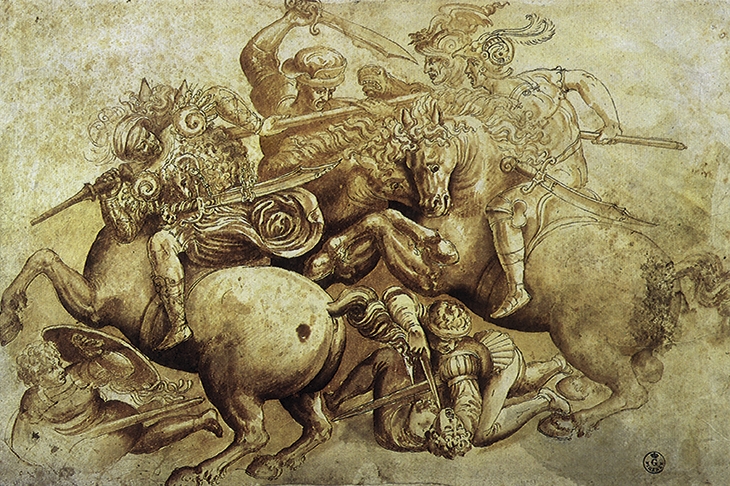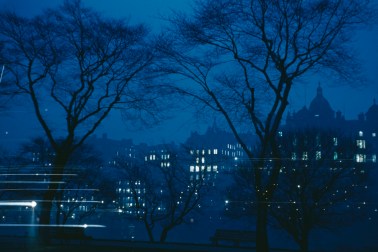The Mediterranean-centred era spanning a century or so either side of 1492 is filled to the brim with stories. There was the discovery of the Americas by a bold Genoese navigator; power struggles between wealthy Italian families, waged through conspiracies, poisonings and stabbings; a radical Dominican monk who managed to impose near-theocratic rule on a republican city before being burned at the stake; the advent of humanism and, subsequently, of a modern, power-focused theory of politics; and the maturing of the visual arts to a new level of sophistication, realism and emotional power. Such stories make up a significant part of the cultural inheritance of the West. Histories, biographies, novels, plays and films, not to mention the visual and physical experience of Renaissance art and architecture, maintain a bridge between our own time and one of Europe’s most turbulent and productive ages.
Catherine Fletcher, however, is worried that this bridge connects us to an illusion. She feels that what we’ve been telling ourselves about the period focuses too much on the good (Michelangelo and da Vinci, for instance) while ignoring its dark underside — ‘the brutal realities behind Renaissance works of art’. At the same time she complains that when we do highlight the period’s violence and greed we tend to over-dramatise and distort them.
To punch all of this lumpy cultural baggage back into shape, she sets out to give us an ‘alternative’ history of the Italian Renaissance — the contemporary academic euphemism for ‘corrected’. If traditional sources excluded certain themes, events and people, she will fix this by being systematically inclusive. No historical fact will be left behind.
But few publishers are keen on multi-volume histories these days, so Fletcher has to limit herself to only a few hundred pages. Her chapters, which promise dives into a dizzying array of subjects, including war, pornography, literature and religious politics, read more like high-speed sprints — except they don’t stick to a disciplined through-line but dart here and there, following new trails as they arise. She will introduce a theme by recounting a relevant event and mentioning a noble or an artist involved in it and then spin off into a long contextualisation, noting family ties and exploring further connections, leaving us a long way from the original subject and wondering how we got there.
Worse, her inclusivity and the pace it forces mean that challenging questions are raised but inadequately addressed. For example, she dismisses the importance of religious belief in the Byzantine population’s response to being conquered by the Ottomans — ‘for all the rhetoric, when it came to real life, people swapped sides’ — but then articulates the opposite, conventional view: that this was an age in which it was normal to believe in both God and the devil — ‘a world of bright and constant religious life’. It’s hard to square the two, and she doesn’t try to. It’s almost as if the serious historian in Fletcher is in conflict with the progressive one, so radical feints are made for show, but no real punches thrown — evidence, perhaps, of an instinct to avoid damaging the basic truth of a Renaissance that genuinely fascinates her.
Indeed, though billing her history as ‘alternative’, Fletcher doesn’t sail very far from the ports built by her predecessors. In The Civilization of the Renaissance in Italy (to go back to the sort of history she regards as generating ‘mythologies of … great men’, and reinforcing ideas of ‘white superiority’), Jacob Burckhardt dedicated a chapter to women, just as Fletcher does, and his descriptions of the era’s violence and corruption were notably graphic. Fletcher’s work feels more like that of a photo editor who dislikes bold contrasts, and so focuses on brightening up the blacks (‘the Borgias get a famously bad press’) and toning down the whites, until the image ends up as an unmemorable tableau of mildly varying greys.
Her chief objection seems to be to public, rather than academic, perceptions of the Renaissance. But in order to change these she would need to replace the traditional stories with something better — a narrative that engages and makes sense to us. She appears to grasp this at the very end, when she offers a metaphor for the era: Pandora’s Box, which ‘even as it released all sorts of evils into the world, also preserved the possibility of hope’. Yet, as she herself would be the first to admit, the Renaissance brimmed with terror and beauty. In a final irony, the story she leaves us with is more imbalanced than the stories she sets out to correct.






Comments